Flores, a beautiful tropical island located in Indonesia, is home to an array of bird species. The island’s diverse natural habitats, ranging from lush rainforests to dry savannas, provide a perfect nesting ground for these winged creatures.
Flores is also a part of the Wallacea region, which is renowned for its vast diversity of avifauna. The birdlife on this island is an essential component of its ecological diversity, and bird enthusiasts and ornithologists flock to Flores to witness these enchanting creatures up close.
With over 180 recorded bird species, Flores is a paradise for bird watchers and nature lovers. This paragraph gives a brief introduction to the impressive birdlife that can be found on the island of Flores in Indonesia.
1. Flores Hanging-Parrot
The Wallace’s hanging parrot, or Flores hanging parrot, is a tiny arboreal parrot found only on the island of Flores.
The male displays bright green plumage with a red bill and a spot of red on the throat.
Its upper tail-coverts and rump are also a striking shade of bright red, while its legs are orange. The female, on the other hand, possesses less red on the throat.
This charming bird measures only 11-12 cm in length and spends most of its time in trees.
It’s an exclusive species, with a limited geographic range, to Flores, making it a sought-after subject for nature enthusiasts and birdwatchers alike.Scientific classification:
| Kingdom | Animalia |
| Phylum | Chordata |
| Class | Aves |
| Order | Psittaciformes |
| Family | Psittaculidae |
| Genus | Loriculus |
| Species | L. flosculus |
2. Flores Scops-Owl
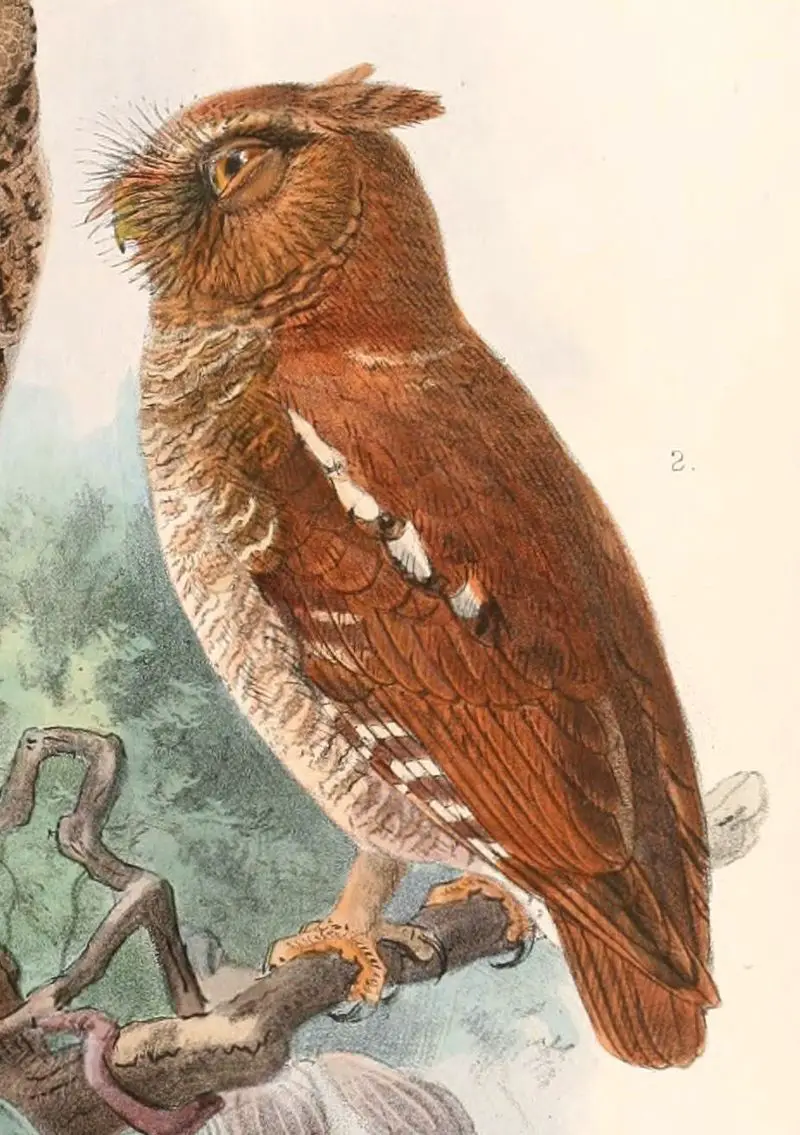
The Flores Scops-owl is a small owl species that can be found exclusively in Flores, Indonesia. These forest-dwelling birds measure around 19 to 21 cm from head to tail.
Unfortunately, their population has significantly decreased due to the loss of their natural habitat, and only an estimated 250 to 2,499 individuals are left in the wild.
The Flores Scops-owl belongs to the Otus genus, which was introduced several years ago.
This owl species is particularly threatened with habitat loss, which is further compounded by other dangers such as pollution, over-harvesting, and climate change.
Despite being small, the Flores Scops-owl plays a vital role in its ecosystem, and its extinction would have far-reaching implications.
To save this species, action must be taken to protect the owl’s habitat and ensure that this beautiful bird can continue to thrive in the forests of Flores for years to come.Scientific classification:
| Kingdom | Animalia |
| Phylum | Chordata |
| Class | Aves |
| Order | Strigiformes |
| Family | Strigidae |
| Genus | Otus |
| Species | O. alfredi |
3. Flores Monarch
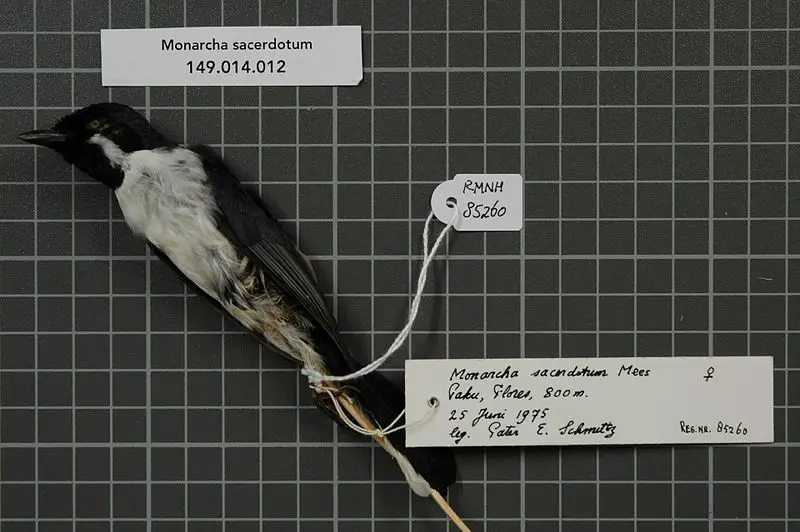
The Flores Monarch, belonging to the Monarchidae family, is a bird species found only in the western part of Flores island in Indonesia.
Its preferred habitat is subtropical or tropical moist lowland forests, generally found at higher elevations ranging between 350m and 1,000m.
The population of Flores Monarch is guessed to be around 2,500-9,999, but it is presumed to be in decline.Scientific classification:
| Kingdom | Animalia |
| Phylum | Chordata |
| Class | Aves |
| Order | Passeriformes |
| Family | Monarchidae |
| Genus | Symposiachrus |
| Species | S. sacerdotum |
4. Flores Crow
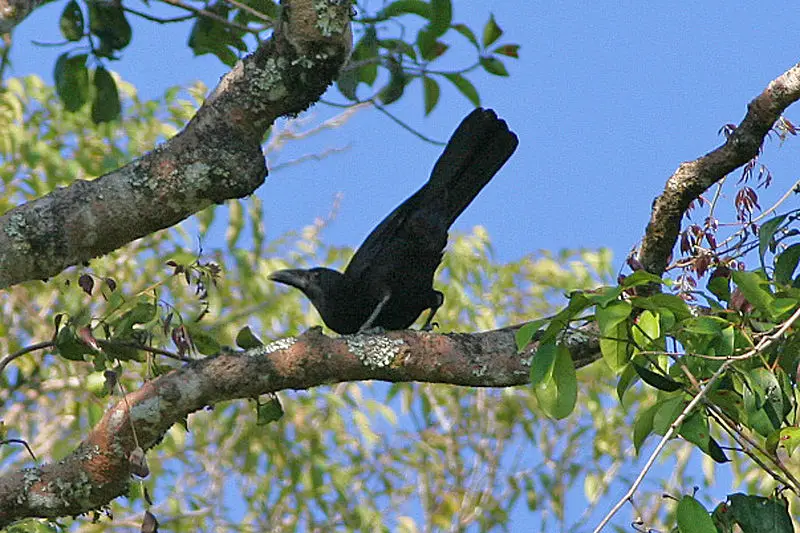
The Flores Crow is a type of bird belonging to the Corvidae family and can only be found in Indonesia.
This bird species favors subtropical and tropical forests with moist and dry conditions.
Due to its dependency on these habitats, the Flores Crow is presently endangered because of the destruction of its natural surroundings.
Additional protection may be needed to help preserve the remaining populations of this unique bird.Scientific classification:
| Kingdom | Animalia |
| Phylum | Chordata |
| Class | Aves |
| Order | Passeriformes |
| Family | Corvidae |
| Genus | Corvus |
| Species | C. florensis |
5. Leaf Lorikeet
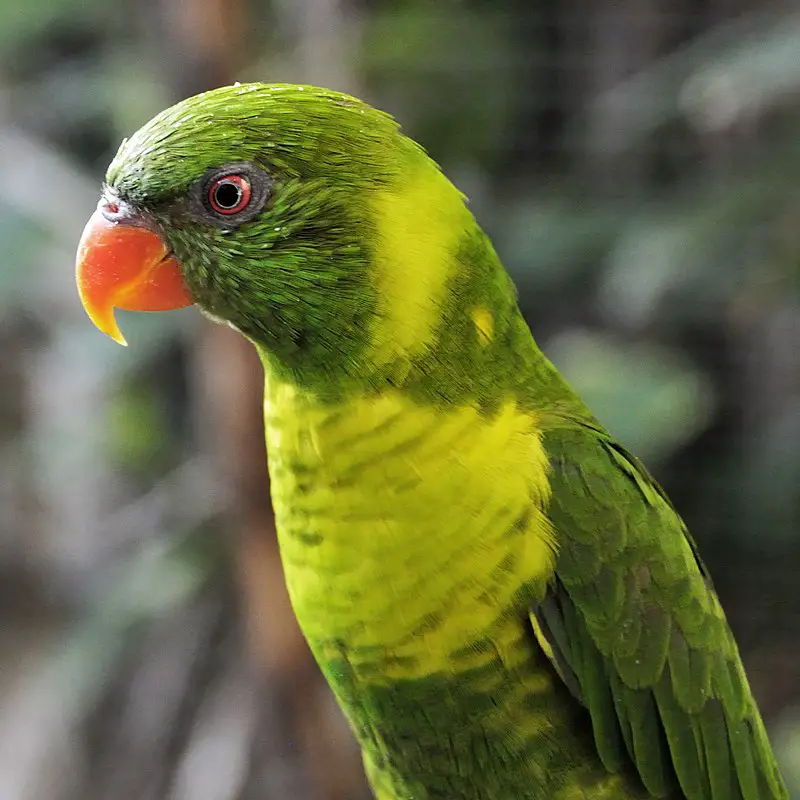
The Leaf lorikeet is a type of parrot found only on the island of Flores in Indonesia. It was once considered a subspecies of the rainbow lorikeet but is now classified as a separate species.
The Leaf lorikeet stands out from other lorikeets due to its unique appearance, with an olive-green body and a red head. This bird is known to feed on nectar and pollen from flowers and is important in pollination.
They also eat insects and fruits in the wild. Sadly, the population of Leaf lorikeets is declining due to habitat loss and illegal trapping for the pet trade.
Conservation efforts are being made to protect this beautiful species and prevent it from becoming extinct.Scientific classification:
| Kingdom | Animalia |
| Phylum | Chordata |
| Class | Aves |
| Order | Psittaciformes |
| Family | Psittaculidae |
| Genus | Trichoglossus |
| Species | T. weberi |
6. Flores Green Pigeon
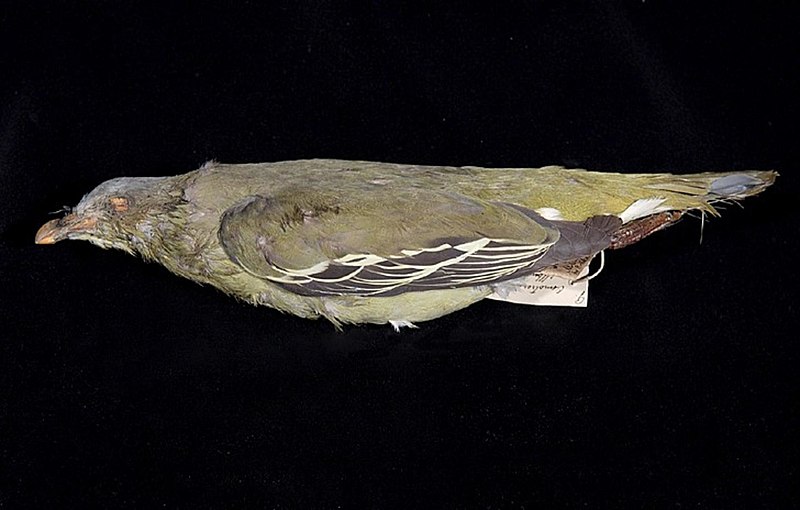
The Flores green pigeon is a unique species of bird found only in the Lesser Sunda Islands of Indonesia. Its natural habitats include subtropical or tropical dry forests, moist lowland forests and dry savannas.
These birds are threatened by habitat loss due to human activities such as deforestation. They are known for their beautiful green plumage and are a sight to behold in their natural habitat.
Despite being a lesser-known species, the Flores green pigeon is an important part of the ecosystem and plays a crucial role in pollination and seed dispersal.
Efforts are being made to protect and conserve their habitats to prevent their extinction.
It is important for humans to recognize the value of all animal species and to work towards preserving their habitats to ensure their survival for generations to come.Scientific classification:
| Kingdom | Animalia |
| Phylum | Chordata |
| Class | Aves |
| Order | Columbiformes |
| Family | Columbidae |
| Genus | Treron |
| Species | T. floris |
Also Featured In: Common Birds of Lombok,
7. Little Minivet
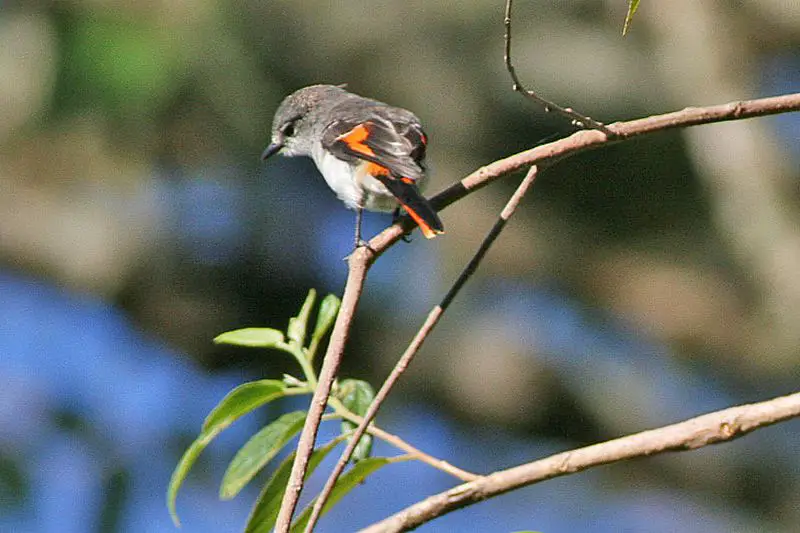
The Little Minivet bird is a unique species found in Indonesia. With its scientific name Pericrocotus lansbergei, this bird belongs to the Campephagidae family.
It is commonly known as the Flores Minivet, named after the place where it was first discovered. This bird has a striking appearance and stands out due to its bright orange and black plumage.
It can be spotted in subtropical or tropical moist lowland forests, where it thrives. The Little Minivet is a relatively small bird, and it is known for its swift and agile flying.
This little bird is endemic to Indonesia, making it a rare sight outside the country’s borders.
Overall, the Little Minivet is a remarkable bird that adds to the biodiversity of Indonesia’s natural ecosystems.Scientific classification:
| Kingdom | Animalia |
| Phylum | Chordata |
| Class | Aves |
| Order | Passeriformes |
| Family | Campephagidae |
| Genus | Pericrocotus |
| Species | P. lansbergei |
8. Mees’s Nightjar
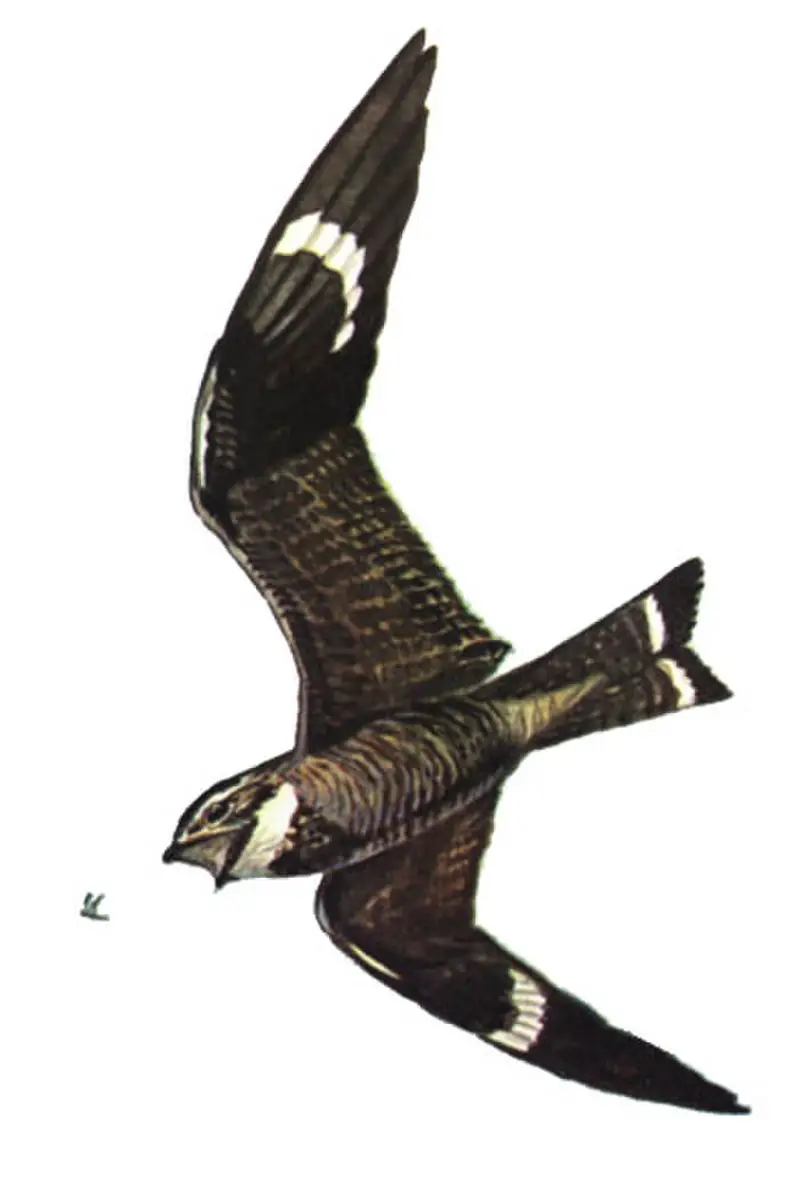
Mees’s nightjar is a unique bird species that was only discovered in 2004. It belongs to the nightjar family and is part of the large-tailed nightjar complex found in the Indonesian islands of Flores and Sumba.
This bird was previously thought to be part of another species due to its physical similarities, but its distinct vocalization prompted its reclassification as a separate taxon.
Mees’s nightjar is named after Gerardus Johannes Mees, a well-known ornithologist who studied birds in Indonesia in the early 1900s.
Despite its recent discovery, not much is known about this elusive nocturnal bird. Further research is needed to understand its behavior and habitat preferences.Scientific classification:
| Kingdom | Animalia |
| Phylum | Chordata |
| Class | Aves |
| Clade | Strisores |
| Order | Caprimulgiformes |
| Family | Caprimulgidae |
| Genus | Caprimulgus |
| Species | C. meesi |
Also Featured In: Birds in Sumba,
9. Flores Jungle Flycatcher
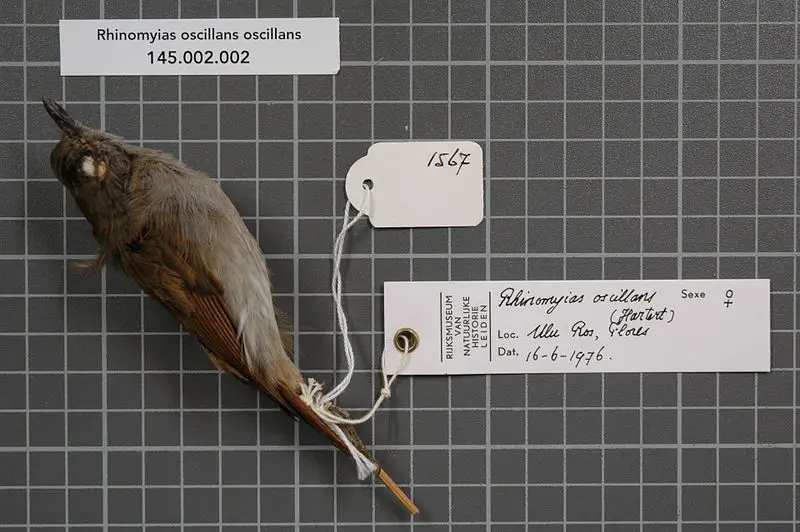
The Flores jungle flycatcher is a species of passerine bird found exclusively on the Lesser Sunda Islands.
It was previously categorized under the Rhinomyias genus but was later included in the Cyornis family due to a molecular phylogenetic study conducted in 2010.
The species is now placed in the Eumyias genus. Unlike its relative, the Sumba jungle flycatcher, which is part of the Cyornis stresemanni species, the Flores jungle flycatcher is known for its distinctive oscillating calls.
Despite not being considered threatened, habitat destruction and fragmentation are thought to pose a potential problem for this species in the future.Scientific classification:
| Kingdom | Animalia |
| Phylum | Chordata |
| Class | Aves |
| Order | Passeriformes |
| Family | Muscicapidae |
| Genus | Eumyias |
| Species | E. oscillans |